To buy delicious and high-quality fish, carefully inspect the carcass. It should be smooth, without plaque, dirt, yellow spots and damage, with slippery and shiny, but non-sticky scales. If possible, press the carcass with your finger — there will be no dents on the fresh herring.
Then check the gills. In good fish, they are dark red in color, without an unpleasant smell.
The degree of salting of herring can be determined by the eyes. In a slightly salted one, they will be clean and reddish at the edges, in a more salted one, they will be a little cloudy, but without a pronounced white film, which indicates that the fish is not very fresh.
If you want to get a herring with caviar, take a carcass with a bulky and bulging belly.
This is a classic approach to cutting herring. This is what they do in restaurants to get a beautiful fillet that can be served on a festive table.
1. Cut off the head along with the pectoral fins.
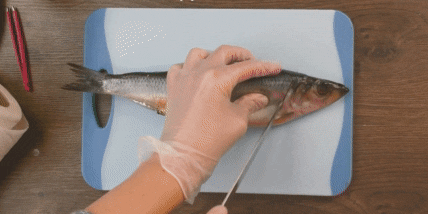
2. Cut the abdomen with a knife or kitchen scissors. Gut the fish. Be sure to peel off the black film from the inner walls of the abdomen.

3. Set aside caviar or milk, if you eat them.
4. Make an incision along the back: from the head to the tail. Remove the dorsal fin.

5. Gently remove the skin, starting from the head. Cut off the tail.

6. Run your fingers along the ridge, trying to separate it. Then carefully detach the first part of the fillet and remove the ridge from the second.
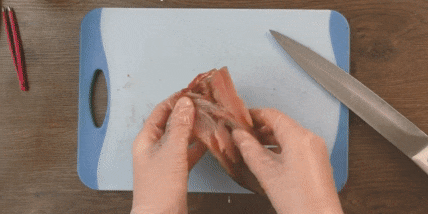
7. Remove the remaining small bones with tweezers.
1. Cut off the head and tail. Remove all fins.
2. Gut the herring. If necessary, rinse the abdomen with cold water and wipe with a paper towel.
3. Wrap the fish in cling film or paper towel and tap lightly on the table. This way the bones will be easier to separate from the meat.

4. Open the herring like a book and put it belly down on the board. Press firmly, and then turn over and remove the ridge.
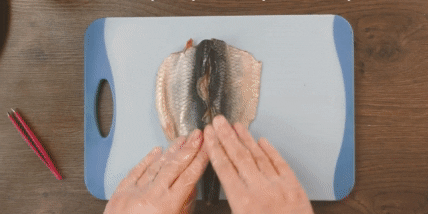
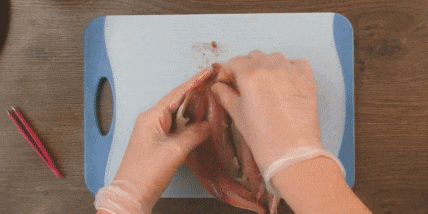
5. If there are small bones left, pull them out with tweezers.
6. Turn the fillets over again and gently remove the skin.
To make the procedure clearer, watch our video tutorial with this and the previous methods.
This is the most elegant way of cutting herring. The output is a fillet divided into four parts. It is unlikely to be suitable for slicing on a festive table, but for salads it is quite.
1. Cut off the head and remove the dorsal fin. Don't touch the tail.
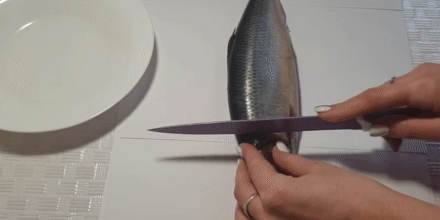
2. Cut the abdomen, take out the caviar or milk, remove the other insides and thoroughly clean everything.
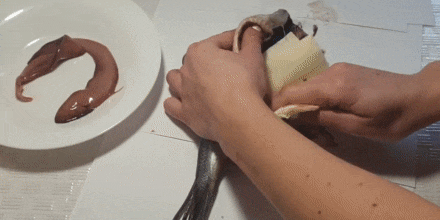
3. After cutting the back from the "nape" to the tail, remove the skin.

4. Make a small incision about 1 cm deep near the tail. Divide the tail fin into two parts and, holding the fish in the air, scroll it towards you.
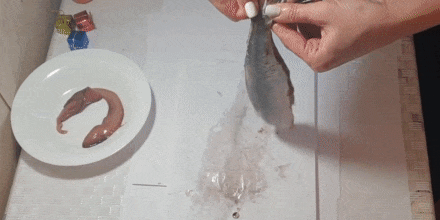
5. Carefully tear the herring into two parts. You will get two bellies (already practically boneless) and a back on the spine.

6. Remove the spine and the remaining small bones.
Salted herring has an unpleasant property — a strong smell, which is difficult to get rid of. To prevent the kitchen and your hands from smelling of fish after cutting, use these tips:
Butchering a herring on a fillet is not so difficult. It is much more difficult to figure out how to serve fish in an original way. Here are some ideas for inspiration.